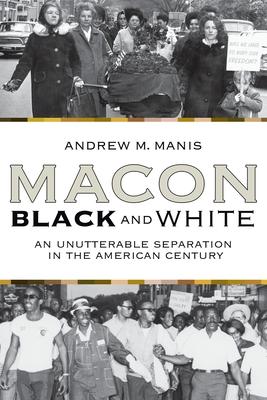A longitudinal study of race relations in a major southern city, Macon Black and White examines the ways white and black Maconites interacted over the course of the entire twentieth century. Beginning in the 1890s, in what has been called the nadir of race relations in America, Andrew M. Manis traces the arduous journey toward racial equality in the heart of Central Georgia. The book describes how, despite incremental progress toward that goal, segregationist pressures sought to silence voices for change on both sides of the color line. Providing a snapshot of black-white relations for every decade of the twentieth century, this compellingly written story highlights the ways indigenous development in Macon combined with other statewide, regional, and national factors to shape the struggle for and against racial equality. Manis shows how both African-Americans and a cadre of white moderates, separately and at times together, gradually increased pressure for change in a conservative Georgia city. Showcasing how disfranchisement, lynching, interracial efforts toward the humanization of segregation, the world wars, and the Civil Rights Movement affected the pace of change, Manis describes the eventual rise of a black political class and the election of Macon's first African-American mayor. The book uses demographic realities as well as the perspectives of black and white Maconites to paint a portrait of contemporary black-white relations in the city. Manis concludes with suggestions on how the city might continue the struggle for racial justice and overcome the unutterable separation that still plagues Macon in the early years of a new century. Macon Black and White is a powerful storythat no one interested in racial change over time can afford to miss.

Macon Black and White: An Unutterable Separation in the American Century
A longitudinal study of race relations in a major southern city, Macon Black and White examines the ways white and black Maconites interacted over the course of the entire twentieth century. Beginning in the 1890s, in what has been called the nadir of race relations in America, Andrew M. Manis traces the arduous journey toward racial equality in the heart of Central Georgia. The book describes how, despite incremental progress toward that goal, segregationist pressures sought to silence voices for change on both sides of the color line. Providing a snapshot of black-white relations for every decade of the twentieth century, this compellingly written story highlights the ways indigenous development in Macon combined with other statewide, regional, and national factors to shape the struggle for and against racial equality. Manis shows how both African-Americans and a cadre of white moderates, separately and at times together, gradually increased pressure for change in a conservative Georgia city. Showcasing how disfranchisement, lynching, interracial efforts toward the humanization of segregation, the world wars, and the Civil Rights Movement affected the pace of change, Manis describes the eventual rise of a black political class and the election of Macon's first African-American mayor. The book uses demographic realities as well as the perspectives of black and white Maconites to paint a portrait of contemporary black-white relations in the city. Manis concludes with suggestions on how the city might continue the struggle for racial justice and overcome the unutterable separation that still plagues Macon in the early years of a new century. Macon Black and White is a powerful storythat no one interested in racial change over time can afford to miss.